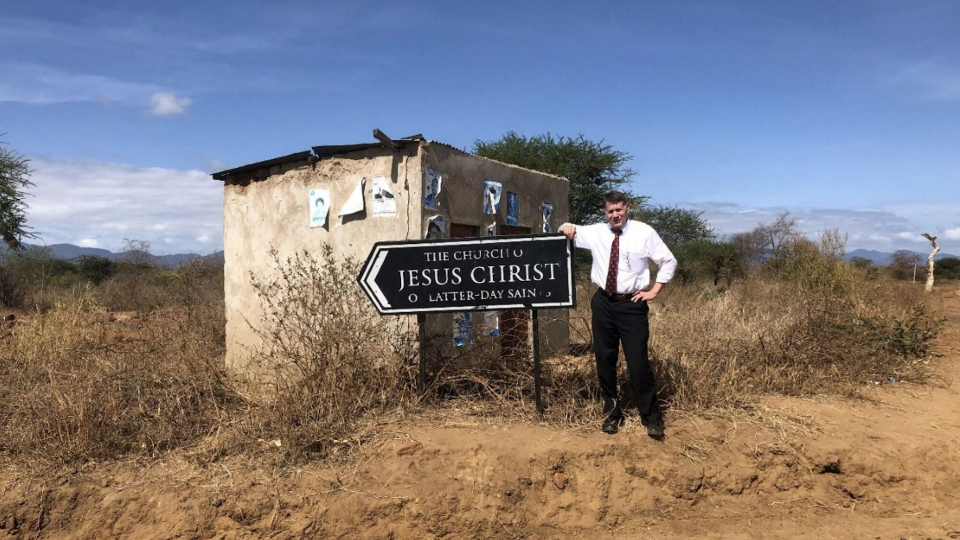
Heiss-History
Matt Heiss of Church History Department of The Church of Jesus Christ of Latter-day Saints looks for the meetinghouse in the Chyulu Hills area of Kenya. Photo courtesy of Matt Heiss, courtesy of Church News.All rights reserved.
This story appears here courtesy of TheChurchNews.com. It is not for use by other media.
By Trent Toone, Church News
Latter-day Saint history is full of inspiring true stories and faith-building experiences lived by members of The Church of Jesus Christ of Latter-day Saints around the world.
Matthew K. Heiss has documented his fair share.
Since 1987, Heiss has worked with the Church History Department and traveled the globe to acquire, manage and train others on collecting Church history.
“There’s power in record keeping,” he said. “My perspective of records and their importance, especially within the context of Church history, has changed from one of a historical resource to a potential source where the Spirit can be made manifest. And, ultimately, I think that’s what record keeping in the Church should point us to — the Savior Jesus Christ. That He is in the details. To me that is part of an unfolding miracle.”
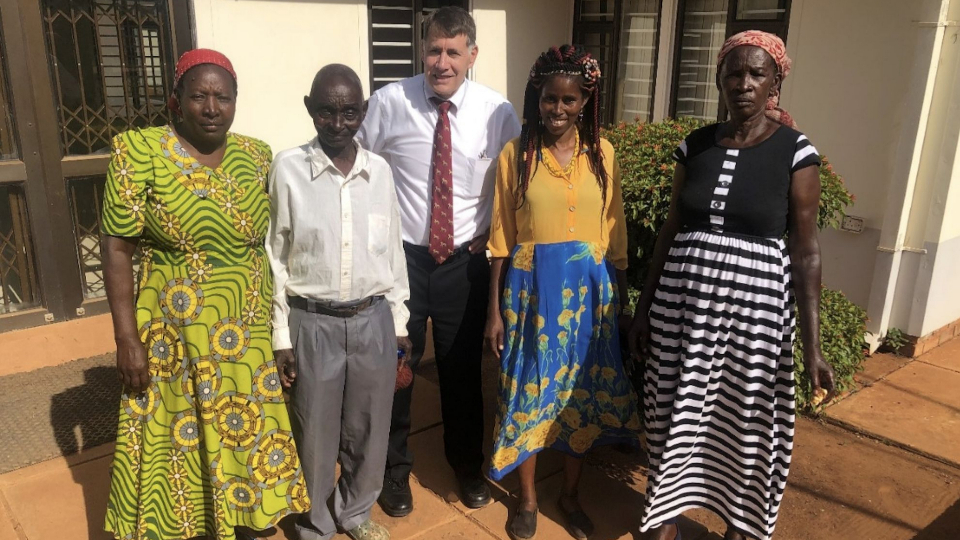
Heiss-History
Matt Heiss of the Church History Department stands with Latter-day Saints in the Chyulu Hills area of Kenya, including his translator (yellow shirt). Photo courtesy of Matt Heiss, courtesy of Church News.All rights reserved.
Recording Church History
Heiss is a member of the Church’s Global Support and Training Division at the Church History Library. Its mission is to collect, preserve and share records that document the beginnings of the Church, that witness to the Lord’s dealings with His children, that document the progression of the Church, including how it changes over time, and how it adapts to different cultures and settings.
Recording histories is part of a scriptural mandate found in Doctrine and Covenants 21:1. Heiss considers President Henry B. Eyring’s 2007 talk “O Remember, Remember” to be almost like a “constitution” for the work of gathering and preserving records.
“It’s really just this notion of seeing the hand of the Lord move in history,” he said. “Write it down, capture it, preserve it. Why? Because it testifies.”
Heiss, who will soon retire, has been responsible for Church history operations in Europe, Africa and the Middle East. Along with interviews in English, he speaks some Russian and German. When necessary, he enlists the help of a translator.
Since 2009, Heiss and others have trained Latter-day Saints, including missionary couples, worldwide how to gather Church history. The local members enhance the work because they speak the language, understand their culture and context, and can do a better job than an outsider, Heiss said.
“Mostly it’s local members, documenting their own history,” he said.
Technology to Record Church History
When Heiss started traveling, he carried a studio-quality cassette recorder, a microphone, more than 15 pounds of D batteries and up to 100 cassette tapes.
“When I would go into places in Eastern Europe or Africa, I knew that it would be very difficult to find those things, so I had to kind of pack everything I needed,” he said.
On one trip in Moscow, Russia, border guards inspected his suitcase, found his cassette tapes and became concerned about his business in their country. He had interviewed early Church converts. He said a silent prayer as they spoke to him in Russian, a language he barely understood.
“They let me through,” he said. “My prayers were answered.”
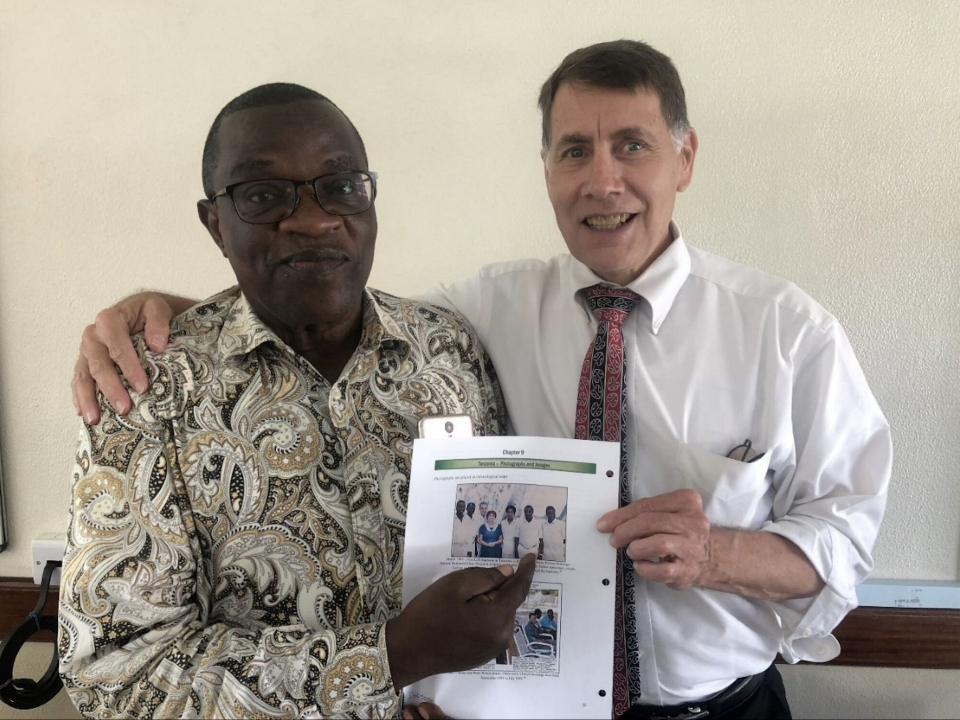
Heiss-History
Matt Heiss of the Church History Department of The Church of Jesus Christ of Latter-day Saints with Japhet Kiiza, who was in the first group of people to be baptized in Tanzania. Kiiza is pointing at the photo of himself on that historic day. Photo courtesy of Matt Heiss, courtesy of Church News.All rights reserved.
Traveling with equipment is much easier now. Last November, Heiss was in South Africa, Kenya and Tanzania. He used a small digital recorder with a large memory card and jump drive, which allowed him to record 100 hours of interviews. The recorder fit in his pocket and only required two AA batteries.
“I was good to go for three weeks. It was awesome,” he said. “That’s one example of the way technology has changed my career.”
Heiss has also captured valuable accounts and stories using videoconferencing. More than a year ago he used Zoom to interview one of the Church’s first members in Guinea-Bissau, a small country in West Africa.
Baptism at Midnight Confirmed
One of the most powerful history-gathering experiences Heiss had involved his own family tree.
As a child, the story was often told of his great-grandmother being baptized at midnight in Germany out of fear the police would arrest and deport the missionaries. Years later, as he worked in the Church History Department, he found her baptismal record and made a copy.
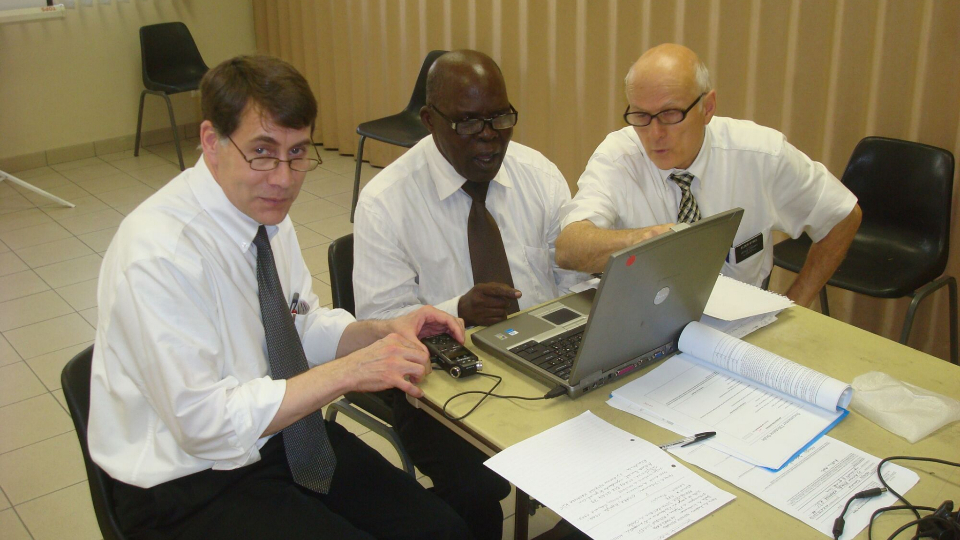
Heiss-History
Matt Heiss, left, of the Church History Department provides training in the Democratic Republic of the Congo. Photo courtesy of Matt Heiss, courtesy of Church News.All rights reserved.
A few years after that, he pulled it out and examined the names of the missionaries. What if one of those elders kept a journal or diary and recorded something about her baptism?
“What a long shot,” he said. “What would be the chances of one of those two missionaries having his journal in the Church archives?”
Heiss found nothing with the first missionary, but the second missionary had a journal. It turns out a co-worker found it on eBay and paid a few dollars for it. Heiss located the journal and opened to the date of her baptism.
“He had written down that he had baptized my great-grandmother at midnight and he got home at 1 o’clock. So the story was true,” said Heiss, who shared it with his family. “That became a very powerful, tender mercy in my life.”
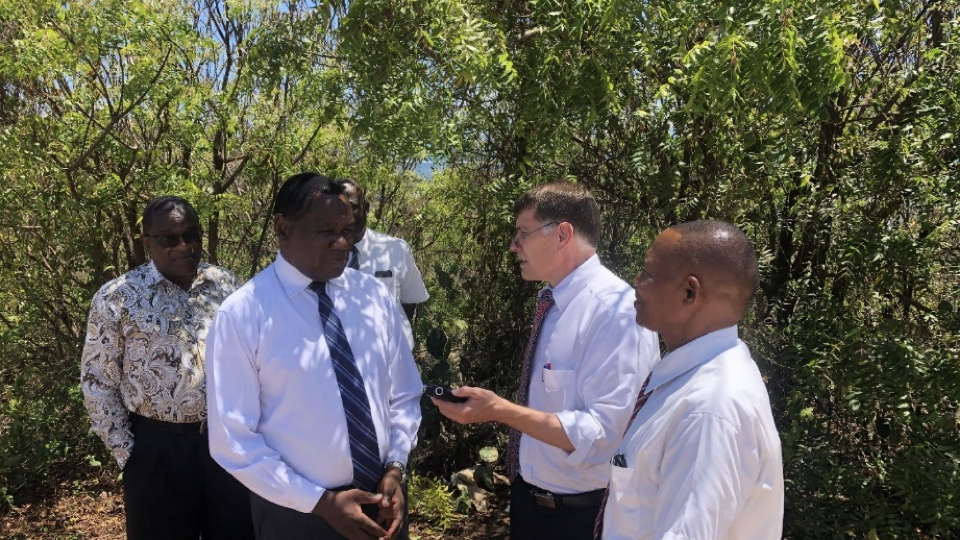
Heiss-History
Matt Heiss of the Church History Department works to record Church history at a site in Tanzania. Photo courtesy of Matt Heiss, courtesy of Church News.All rights reserved.
Advice for Preserving Your Family History
For those interested in documenting their own history, here’s advice from Heiss:
“Do it before it’s too late.”
Heiss suggested recording basic interviews with older relatives, creating timelines and identifying people in photos. Let it be a “spiritual endeavor,” and have a prayer in your heart, he said.
“I think that the capturing of Church history is, or should be, a spiritual endeavor,” he said. “When I start talking to people, and we get a little bit beyond just the surface stuff, there is a spirit that comes into that setting that triggers memory. ... I would just encourage people to take a spiritual perspective of the whole work of gathering history and the Spirit will be present.”
Copyright 2023 Deseret News Publishing Company.
